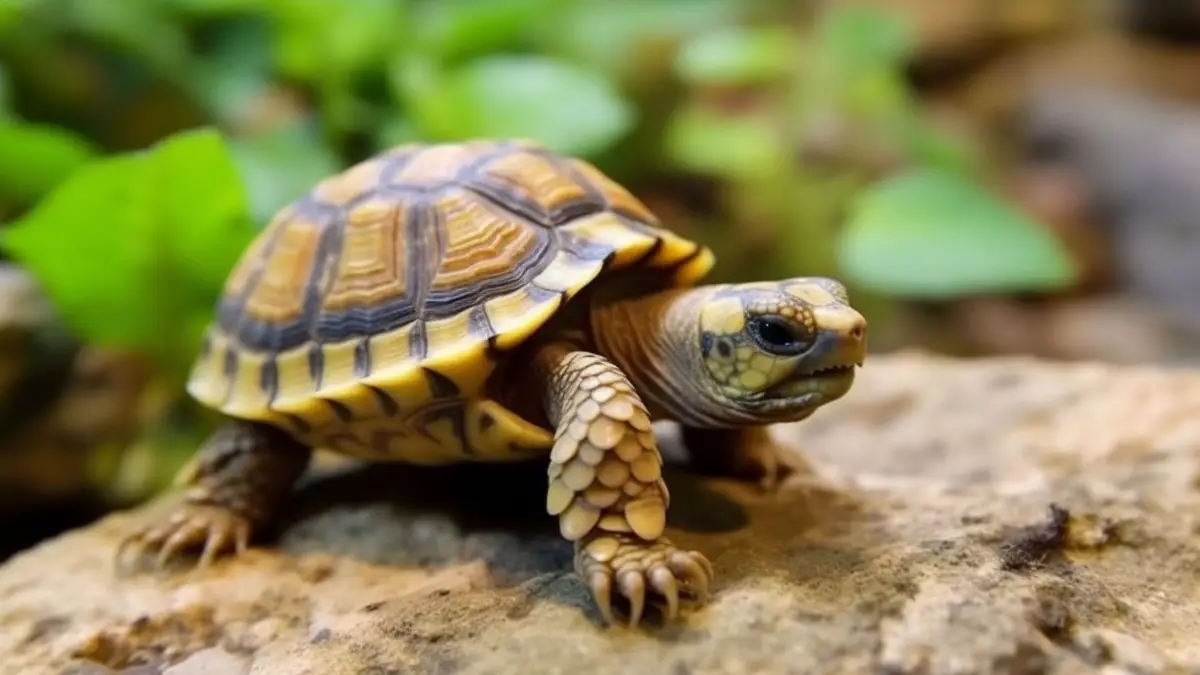A Comprehensive Guide For Baby Russian Tortoise Care: Facts, Care Tips, and More!
Undoubtedly, Russian tortoises are magnificent among the class Reptilia, found in a variety of habitats. No wonder people are willingly keeping these little yet wonderful creatures as pets.
If you’re eager to keep them as well, are you aware of the Baby Russian tortoise care guide? What you need to take care of these exotic creatures is
- A well-built shelter with a substrate
- Good UVB lighting
- Low humidity
- Artificial burrows
- And tons of dedication and commitment!
Of course, that’s not all, nor are these instructions so simple. You need in-depth knowledge about the little guy you’ll be keeping and its caring guidelines. Ready for it? Let’s go!
About Russian Tortoise: A Quick Glance
Contents
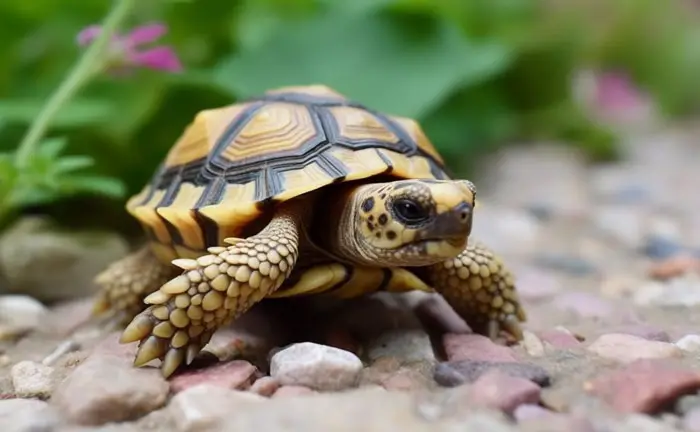
Before going into the care details, you should rather know these little creatures better. It’s okay if you’re in a hurry; we’ve got a summary of the details in the table below.
| Species name | Russian, Horsfield tortoise |
|---|---|
| Scientific name | Testudo horsfieldii |
| Family | Testudinidae |
| Size | 6-10 inches (15-25 cm) |
| Lifespan | More than 50 years |
| Color | Brown, gray, yellow, etc. |
| Diet | Leafy greens, fruits, seeds; herbivorous |
| Habitat | Desserts of Central Asia and grasslands |
| Temperature requirements | 18 to 29 degrees C |
| Humidity requirements | 50% to 75% |
| Shelter size | 4’ x 4’ |
| Active time | Day time |
| Health issues | Parasitic and respiratory infections, shell rotting, etc. |
| Found in | Pakistan, Iran, Uzbekistan, Turkmenistan, Russia, etc. |
| Interesting fact | Can easily survive with lower water and excessive temperature conditions |
What Is A Russian Tortoise Like? – Size and Behavior
Apart from being well-known as pets due to their small size, unique behavioral patterns, and extreme living conditions, there’s so much you need to know about them before keeping them as pets.
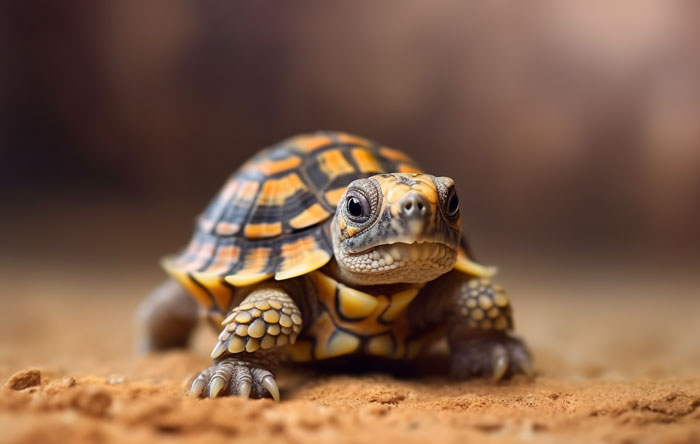
Size
There’s a difference in size between the captive-bred Russian tortoise vs. the wild-caught ones. While the maximum length of the wild ones ranges somewhere between 5-6 inches, the captive-bred ones grow up to 8-9 inches.
Typically, male Russian tortoises are smaller in size than female ones. The maximum height they reach ranges from 6 to 8 inches. Again, the female Russian tortoises can grow anywhere from 6 to 10 inches. Sometimes, their height can extend even more, making them look huge!
Behavior
The fun thing about having a Russian pet tortoise is that they are full of personalities such as,
Burrowing
To protect themselves from extreme heat and weather conditions, they create tunnels and burrows to maintain body temperature. These tunnels are usually several feet deep, allowing the tortoises to escape from chilling cold or scorching heat.
Basking
Similar to the wild, the ones in captivity love some basking time and a dedicated basking spot with a temperature from 35-38 degrees C.
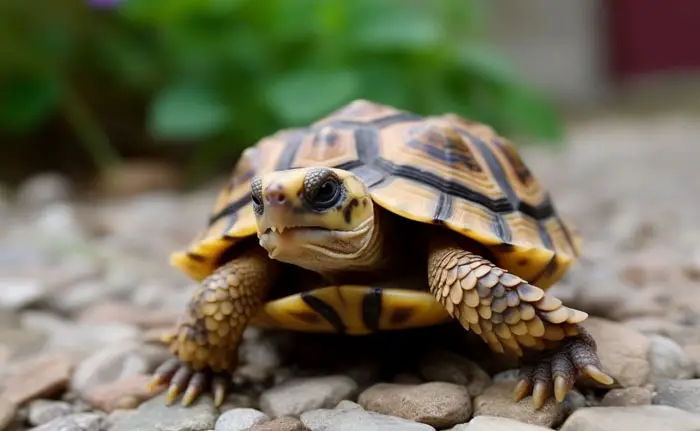
Foraging
Even if the tortoises have access to abundant food supplies, they will still forage for food out of habit. So, when you keep a Russian pet tortoise, make sure you provide them with plenty of leafy greens in their shelter.
Hissing
They usually show hissing and panting behavior when at the time of feeding them.
Head-banging
Head-banging behavior is a sign of either showing dominance for mating or frightening away predators or threats.
Squeaking
They typically make squeaking noises at the time of mating.
In-depth Care Guide For Your Pet Russian Tortoise
Yes, they may be a little on the exotic side, but caring for your pet is quite easy if you’re willing to learn more about their caring instructions and needs. For example,
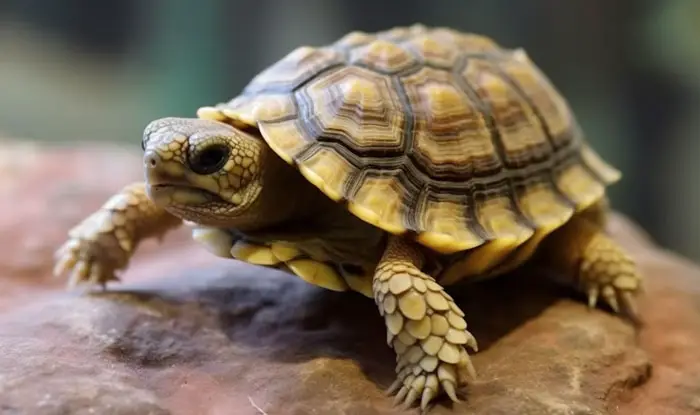
Building the ideal shelter
Baby Russian tortoises are quite habitual in living in extreme conditions when you are keeping one. So make sure you create comfortable shelters for them!
Enclosure size
The minimum dimensions for their ideal enclosure should be 3’ x 1.5’ for indoors, while outdoors, it should be no less than 4’x4’. Also, when making an outdoor enclosure, make sure to place a screened cover allowing adequate light.
Similarly, make sure the enclosure walls have a minimum height of 2-2.5 feet, so your little buddy doesn’t escape.
Substrate
The substrate on which your pet tortoise survives has to be all organic and devoid of any pesticides or fertilizers. You can make substrates using vermiculture and peat moss or a combination of organic potting mix with Coco Coir, Orchid bark, or forest floor cypress mulch.
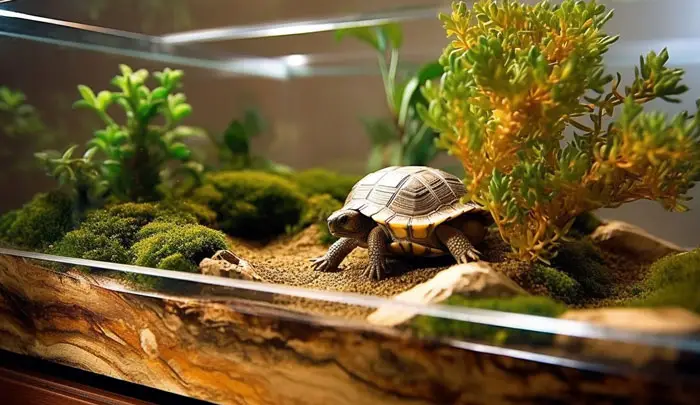
The substrate depth should be at least 4 inches allowing your pet to dig well and regulate its body temperature properly.
Moreover, make sure the substrate you make is edible for the tortoise since they habitually feed on these. So, you can also use alfalfa pellets or fruit seeds in the substrate.
DO NOT use sand or gravel in the substrate even a little bit because it can severely damage the tortoise shells.
Habitat condition
An ideal habitat condition for your little tortoise would be a shaded one from direct sunlight with standard temperature requirements. You may need to use dehumidifiers for warm and humid zones while additional heating for chilly areas.
Also, don’t forget to install a hiding or hibernating place, like a cave to make them feel at home!
Although they are pretty small, they like living in spacious areas. So make sure your enclosure has at least 10-16 sq. ft area. Yes, a male and a female tortoise can coexist in one properly installed cage, but experts don’t recommend that.
Feeding the Right Diet
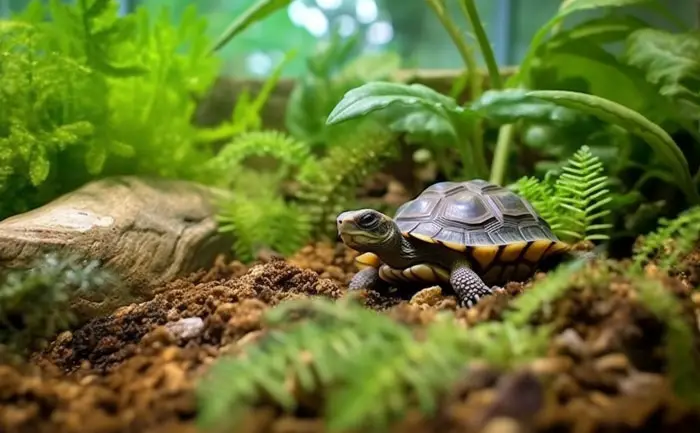
As we already told you, these tortoises are full of personalities and they do love some variety in their everyday diet. Here’s a list of food you can include in their regular diet.
- Leafy greens
- Dry pellet food
- Seeds
- Garden weed
- Dandelions
- Endive
- Mustard greens
- Watercress
- Beans
- Squash
- Asparagus
- Kale
- Tortoise chow mixed in water.
Besides, you might also need a few basic feeding guidelines for your small friend. Take a look-
- Three meals a day along with all-day access to little snacks is important for their growth
- Don’t forget their daily dose of calcium supplements for the growth and health of their shells. Just add a little bit to their everyday meals once a day, and that should be enough! Also, make sure the calcium supplements do not contain vitamin D3 in any proportion.
- Food items like spinach, meats, insects, and high-protein meals should be avoided.
Absolute Humidity Requirements
Living originally in dry conditions, these little creatures require low humidity for their habitats. 40% to 70% is the ideal humidity for them. You can also make a humid hide cave with moist moss lining when creating a substantial shelter.
Bathing
There should be constant access to water for your baby Russian tortoise. Besides, for proper hydration, it’s suggested that you soak the little one in a small dish for about 10 minutes for good health.
The temperature of the bath should be about 29-30 degrees C. And don’t forget to place them on their green land after bath time!
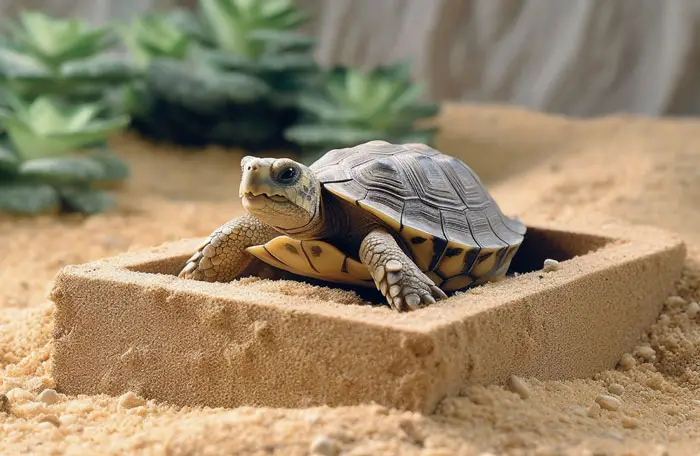
Setting the Right UVB Lighting And Temperature Conditions
Interesting fact; baby Russian tortoises need exposure to UVB rays. You may use a T5 tube-type Reptisun UVB 10 lamp installment in the shelter. If you’re thinking of installing some regular bulbs in there, drop the idea because they don’t work to cover the whole space.
For the Russian tortoise shelter, the ideal temperature is about 18 to 29 degrees C. If your particular area has chilly weather at night, don’t worry; just make the little guy a well-insulated burrow for a comfortable stay.
What Are Some Probable Health Concerns For Your Pet Baby Russian Tortoise?
While it’s fun to have a small companion, feeding it, making a shelter for it, or even bathing it regularly, if sickness ever catches them, there’s nothing more concerning. So, watch out for these.
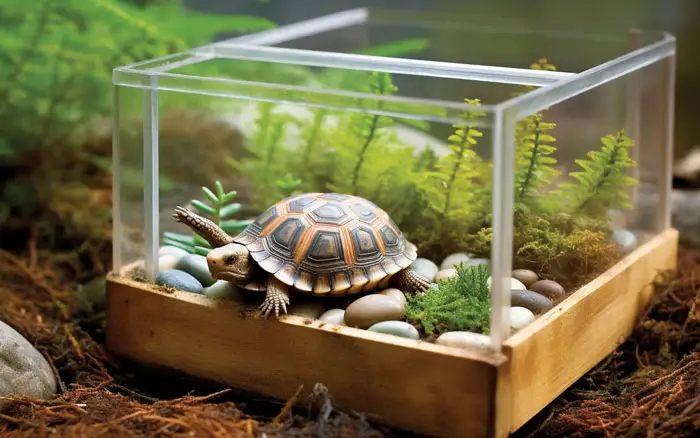
Parasitic infection
Internal parasitic infection in the digestive system or gastrointestinal tract is pretty common for tortoises. What you can do to prevent such a crisis is to take your pet for annual fecal examinations. Also, make sure to maintain hygienic conditions in their shelter and diet.
Respiratory problems
Typical symptoms of respiratory illness in Russian tortoises include lack of appetite, breathing difficulty, runny nose, lethargic behavior, etc. These ailments can be the result of parasitic, bacterial, or fungal infections, vitamin deficiencies, etc.
Metabolic Bone Diseases
Metabolic bone diseases (MBD) imply weak and fragile bones or skeletal systems. The main reason behind this is excess amounts of Vitamin D or phosphorus and low amounts of calcium. Besides, if you are not careful about precision in UVB lighting, there’s a chance of developing MBD.

Shell rotting
For similar reasons of mineral imbalance or parasitic infections in the shell, your little buddy can suffer from shell rotting issues.
Whatever the ailment is, you must take your baby Russian tortoise to a veterinarian as soon as you spot a symptom.
FAQs
Do you want to know a little more? Have your eyes on this section.
The price range for both babies and adult Russian tortoises is from $100 – $300. You can buy them from exotic pet stores or a captive breeder.
The digestive system of a Russian tortoise isn’t designed to digest milk or other animal proteins. They are herbivores and rely mostly on leafy greens.
Spraying your baby Russian tortoise with water may result in damage to the shell. So, it’s better to just soak them for a while regularly.
Parting Words
Of course, you don’t want your small pet to fall sick or live in an unwanted, unhappy state. That’s why learning and maintaining the baby Russian tortoise care guide is a must.
And as you have already given it a go, just remember the little details and your little pet will be just fine. While building a shelter for the tortoise with proper guidelines can be a bit difficult, it’s also quite fun! Just keep in mind that you’re doing this for a little friend you’re going to have for a lifetime. Have fun!

